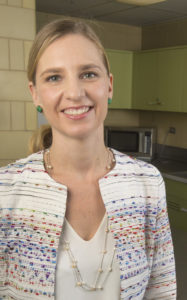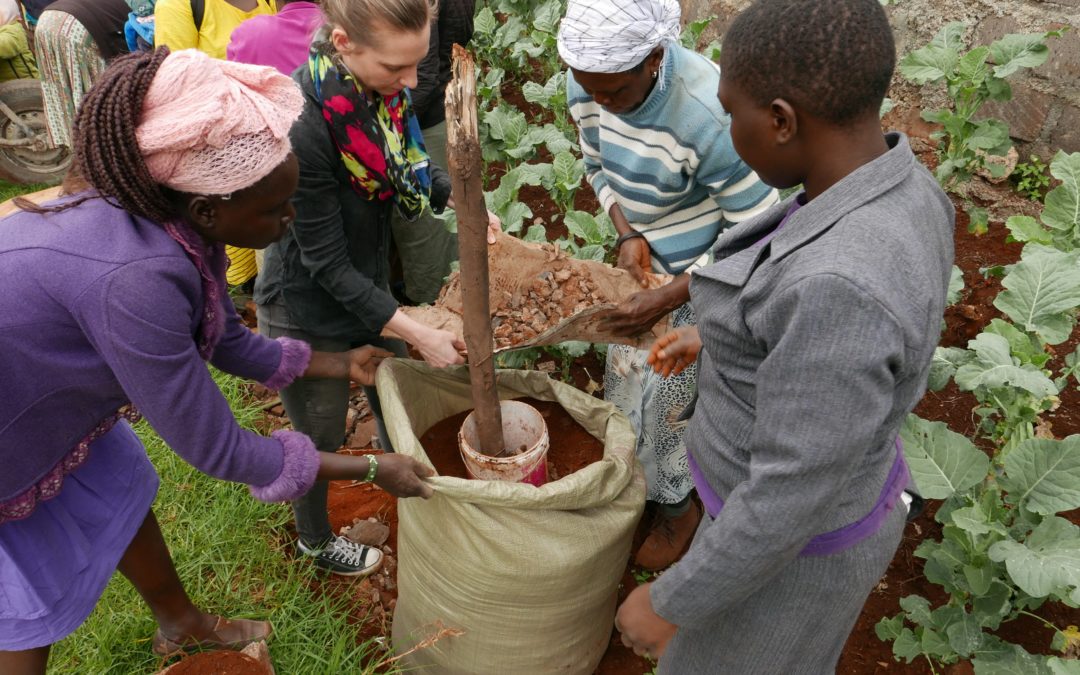A Kenyan woman shakes dirt out of her skirt and rolls up her sleeves, preparing to load up a basket with the produce that she picked from her sack garden. She spreads a layer of cowpeas along the bottom, then adds bushels of leafy greens, such as amaranth, black nightshade, and spider plant.
After a long morning caring for her young children and working outside in the heat, her stomach growls. Certainly, these nutrient-rich vegetables—cooked together with beef and rice to make a hearty stew, perhaps—would help to satisfy her hunger and provide nourishment to fuel her afternoon activities.
She’ll only eat some ugali (cornmeal porridge) for lunch, though, before walking to a market in Kibera, the urban slum where she lives, in Kenya’s capital city of Nairobi. At the market, she will sell the produce that she herself planted from seedlings, nurtured, and harvested, creating a vitamin-dense bounty of versatile ingredients. By selling the vegetables, she will earn enough cash to buy some chapati (flatbread), potatoes, and beans. She’ll be able to spread those foods over more meals—and more mouths.
But she and her family will still be hungry.
No Easy Choices
 This type of diet is taking its toll on the people of Kenya, which is battling multiple burdens of malnutrition, including nutrient deficiency, obesity, and diet-related noncommunicable diseases.
This type of diet is taking its toll on the people of Kenya, which is battling multiple burdens of malnutrition, including nutrient deficiency, obesity, and diet-related noncommunicable diseases.
“African indigenous vegetables [AIVs] are particularly high in micronutrients, but they are not consumed in high enough quantities, nor are they regularly grown by the people who live in Kibera,” says Shauna Downs, a food systems researcher at Rutgers who is conducting a study in Kibera, one of Africa’s largest urban slums with an estimated population of 700,000.
“Many people in Kibera do not have the resources—land, clean soil, fertilizer, water—to grow AIVs successfully,” says Downs, who is also an assistant professor in the Rutgers School of Public Health. “Even if they can grow them, they may decide to sell them at market because the financial income is so important.”
Conducting a Farm-to-Fork Analysis
The potential for healthier lifestyles is complex. With funding from a Rutgers Global Health Institute seed grant, Downs is assessing the feasibility of increasing AIV production, sale, and consumption in Kibera.
Downs’s study involves approximately 35 women who are growing AIVs in sack gardens as part of a larger USAID-funded project that is addressing undernutrition and food insecurity in regions of Kenya. Building upon this project, she is conducting a value-chain analysis (typically a business-oriented approach that looks at ways to improve financial value) “through a nutrition lens,” she says. Downs’s partners include colleagues in Rutgers’ School of Environmental and Biological Sciences—faculty members James Simon and Daniel Hoffman, and plant biology doctoral candidate Emily Merchant—as well as the Kibera-based NGO Mirror of Hope.
Downs describes the scope of her research as “farm to fork.” She will consider everything and everyone involved—from pre-season planning through the production of AIVs, as well as post-harvest processing, distribution, marketing, retail, and consumption. Downs also will identify factors that challenge the value chain, such as distance to the market, family dynamics, and relationships with traders. These insights will support her overarching objective to develop a package of interventions aimed at improving the availability, affordability, and acceptability of AIVs among the people of Kibera.
“People living in Kibera seem to know that the vegetables are nutrient-rich and healthy,” Downs says, based on her informal conversations in the slum. “There are other factors at play, and this approach allows us to examine those more closely, and then offer solutions.”

